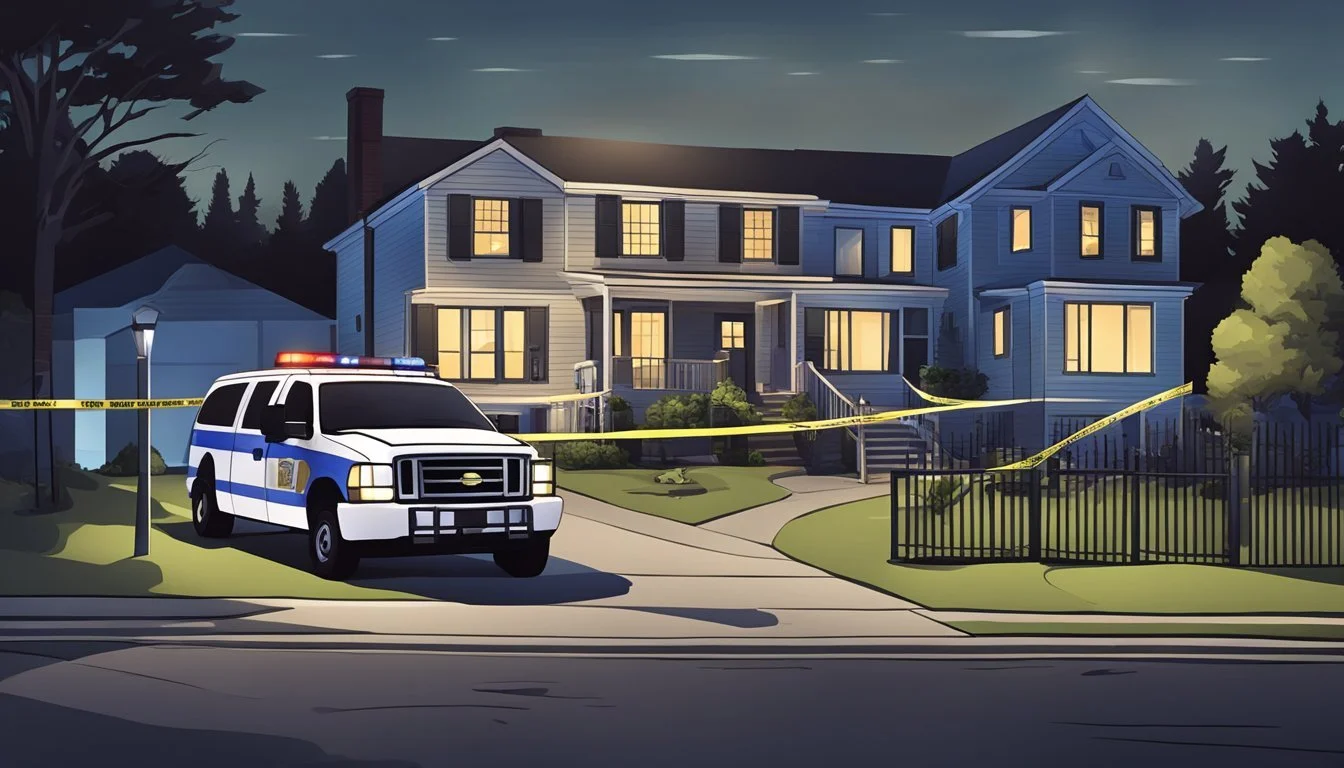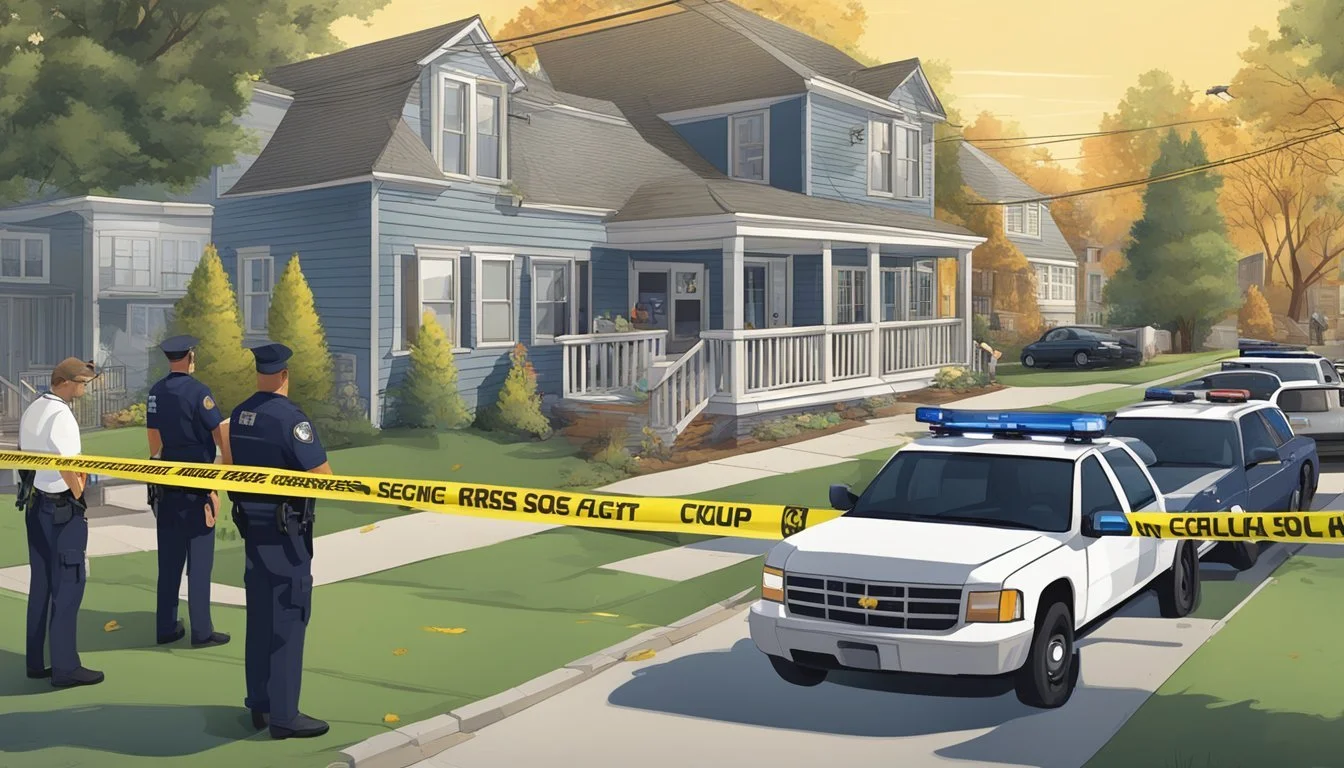Chilling Details: The Shocking Discovery of JonBenét Ramsey's Body and the Mystery That Followed!
The unsolved murder of JonBenét Ramsey continues to captivate public interest nearly three decades after the tragic event. On December 26, 1996, the six-year-old beauty queen's lifeless body was discovered in the basement of her family's Boulder, Colorado home. John Ramsey, JonBenét's father, found her body approximately seven hours after she had been reported missing.
The circumstances surrounding JonBenét's death were perplexing from the outset. A ransom note was found in the house, yet the child's body remained on the premises. The autopsy revealed that JonBenét had suffered a skull fracture and had been strangled with a garrote. These conflicting pieces of evidence have led to numerous theories and suspects over the years.
Despite an extensive investigation involving over 1,400 pieces of evidence, the case remains unsolved. Law enforcement agencies have explored various leads and potential suspects, but no definitive conclusion has been reached. The JonBenét Ramsey case continues to be one of the most infamous cold cases in American criminal history, with ongoing efforts to uncover the truth behind this tragic event.
Background of JonBenét Ramsey
JonBenét Ramsey was a young American child beauty queen whose life was tragically cut short. Her participation in pageants and family background provide context for the events surrounding her death.
Early Life and Beauty Pageants
JonBenét Patricia Ramsey was born on August 6, 1990, in Atlanta, Georgia. From an early age, she entered the world of child beauty pageants, quickly becoming a prominent figure in the circuit.
JonBenét won numerous titles, including Little Miss Colorado and National Tiny Miss Beauty. Her performances often included singing and dancing routines. The young beauty queen's blonde hair, bright smile, and elaborate costumes became her trademark in competitions.
Despite her success, JonBenét's participation in pageants later sparked debates about the appropriateness of such events for children.
The Ramsey Family
JonBenét was born into a wealthy family. Her father, John Ramsey, was a successful businessman who ran a computer services company. Her mother, Patsy Ramsey, was a former beauty queen herself.
The family, including JonBenét's older brother Burke, moved to Boulder, Colorado, in 1991. They lived in a large home at 755 15th Street, which would later become the crime scene.
John and Patsy were active in the local community and often hosted social gatherings. The Ramseys appeared to lead an idyllic life, with JonBenét's pageant success adding to their public profile.
Discovery of the Crime
The discovery of JonBenét Ramsey's murder unfolded through a series of events on December 26, 1996. It began with a frantic 911 call, followed by the finding of a mysterious ransom note, and culminated in the tragic discovery of the young girl's body.
The 911 Call
At 5:52 AM, Patsy Ramsey dialed 911 in a state of panic. She reported that her 6-year-old daughter JonBenét was missing and that she had found a ransom note. The dispatcher immediately alerted the Boulder Police Department.
Patsy's distressed voice conveyed the urgency of the situation. Officers were quickly dispatched to the Ramsey home at 755 15th Street in Boulder, Colorado.
Ransom Note Details
The ransom note, found on the spiral staircase, was unusually long at 2.5 pages. It demanded $118,000 for JonBenét's safe return - oddly close to John Ramsey's recent bonus amount.
The note warned against contacting police or "she dies." It was signed "S.B.T.C." - an acronym that remains unexplained to this day.
Investigators later determined the note was written on paper from a pad found in the Ramsey home, using a pen from the house.
Initial Crime Scene Observations
When police arrived, they found no signs of forced entry. The house was searched, but JonBenét wasn't located immediately.
Friends and family gathered at the home, potentially contaminating the crime scene. Police initially treated the case as a kidnapping, not securing the house as a potential murder scene.
At 1:05 PM, Detective Linda Arndt suggested John Ramsey and a friend search the house again. In the basement, John discovered JonBenét's body in a small, windowless room known as the wine cellar.
The Investigation
The JonBenét Ramsey murder investigation spanned decades, involving multiple law enforcement agencies and generating intense public interest. Controversial police tactics, media scrutiny, and ongoing efforts to solve the case shaped its trajectory.
Boulder Police Department's Approach
The Boulder Police Department faced criticism for their handling of the initial crime scene. Officers failed to secure the area properly, allowing potential evidence contamination. Investigators focused heavily on the Ramsey family as suspects, a decision that drew controversy.
The police interviewed John and Patsy Ramsey separately on December 26, 1996. They collected DNA samples and handwriting exemplars from family members and associates. Detectives also analyzed the 3-page ransom note found in the home.
In April 1997, police identified John and Patsy Ramsey as the main suspects. This development led to strained relations between the Ramseys and law enforcement.
Media Coverage and Public Interest
The case garnered unprecedented media attention. News outlets descended on Boulder, Colorado, providing round-the-clock coverage. JonBenét's participation in child beauty pageants fueled public fascination with the case.
Tabloids and TV shows speculated wildly about potential suspects and motives. The Ramsey family faced intense scrutiny, with their every move analyzed by the press.
Public opinion became divided, with some believing the parents were involved and others suspecting an intruder. The media frenzy complicated the investigation, as witnesses sold their stories to tabloids.
Cold Case Revival Efforts
Despite the case going cold, efforts to solve JonBenét's murder continued. In 2006, John Mark Karr was arrested after falsely confessing to the crime. DNA evidence quickly exonerated him.
In 2008, new DNA techniques identified previously undetected genetic material on JonBenét's clothing. This led to the exoneration of the Ramsey family. The Boulder District Attorney formally apologized to the Ramseys for the suspicion cast upon them.
Recent years have seen renewed interest in the case. In 2021, police announced they would use new DNA technology to re-examine evidence. Private investigators and amateur sleuths continue to pursue leads, hoping to finally solve this tragic mystery.
Evidence and Forensics
The JonBenét Ramsey case yielded significant physical and forensic evidence. Key findings from the autopsy, DNA analysis, and crime scene examination have shaped theories about the murder.
Autopsy Findings
JonBenét's autopsy revealed crucial details about her death. The cause was determined to be asphyxiation by strangulation, with a fractured skull as a contributing factor.
A garrote made from cord and a broken paintbrush handle was found around her neck. The autopsy also noted vaginal injuries, suggesting possible sexual abuse.
Marks on her body indicated she may have been restrained or struggled with her attacker. Time of death was estimated to be between 10 PM on December 25 and 2 AM on December 26, 1996.
DNA Evidence Collected
DNA evidence plays a central role in the ongoing investigation. Investigators collected samples from JonBenét's clothing, particularly her underwear and long johns.
Touch DNA analysis revealed genetic material from an unknown male on these items. This DNA did not match any family members or known suspects.
Additional DNA was found under JonBenét's fingernails and on the waistband of her long johns. However, the small amounts and potential degradation have made conclusive identification challenging.
Theories Based on Physical Evidence
The physical evidence has led to various theories about the crime. The presence of unknown male DNA suggests an intruder theory.
However, the lack of signs of forced entry and the detailed ransom note written on household paper point to potential insider involvement.
The garrote's construction using materials from the home has been interpreted differently by experts. Some argue it indicates a staged crime scene, while others see it as evidence of a prepared intruder.
The duct tape over JonBenét's mouth and the ligatures on her wrists have also been scrutinized, with debates over whether they were applied before or after death.
Key Suspects and Theories
The JonBenét Ramsey case has generated multiple suspects and theories over the years. Investigators have scrutinized family members, explored potential intruders, and considered other individuals connected to the crime.
Patsy and John Ramsey
JonBenét's parents initially faced intense scrutiny. Suspicions arose due to inconsistencies in their statements and behavior. Some experts questioned the authenticity of the ransom note, suggesting Patsy may have written it.
John Ramsey's discovery of JonBenét's body in the basement, after previous searches, raised eyebrows. The parents' reluctance to cooperate fully with police early in the investigation further fueled suspicions.
However, DNA evidence found on JonBenét's clothing did not match either parent. The Ramseys were officially cleared as suspects in 2008 based on new DNA analysis techniques.
Intruder Theory and Suspicious Findings
The intruder theory gained traction due to several pieces of evidence. Investigators found a broken basement window and possible entry points. Unidentified male DNA was discovered on JonBenét's underwear and longjohns.
Suspicious findings included:
Unmatched fingerprints on the ransom note
Unknown hair samples on JonBenét's blanket
A Hi-Tec boot print in the basement
These elements supported the possibility of an outside perpetrator. However, critics argue that lack of clear signs of forced entry and the oddly specific ransom amount weaken this theory.
Other Potential Suspects
Several individuals have been investigated or come forward over the years. John Mark Karr falsely confessed to the murder in 2006 but was quickly ruled out through DNA testing.
Police examined known sex offenders in the area and individuals with connections to the Ramsey family. A former housekeeper and her husband were among those investigated.
Some theories suggest involvement of a ring of pedophiles or a disgruntled business associate of John Ramsey. However, none of these leads have produced conclusive evidence to solve the case.
Legal Proceedings and Public Response
The JonBenét Ramsey case led to complex legal proceedings and intense public scrutiny. Multiple investigations, grand jury deliberations, and defamation lawsuits shaped the aftermath of this tragic event.
Grand Jury and Indictments
In 1998, a grand jury convened to review evidence in the JonBenét Ramsey murder case. After 13 months of deliberation, the grand jury voted to indict John and Patsy Ramsey on charges of child abuse resulting in death and accessory to first-degree murder.
However, District Attorney Alex Hunter declined to sign the indictments, citing insufficient evidence to secure a conviction. This decision remained sealed until 2013, when a judge ordered the release of the grand jury documents.
The revelation of these indictments years later reignited public interest in the case and raised questions about the initial handling of the investigation.
District Attorney's Role and Statements
District Attorney Mary Lacy played a significant role in the case's trajectory. In 2008, she issued a formal apology to the Ramsey family, stating that new DNA evidence had cleared them of any involvement in JonBenét's death.
Lacy's exoneration letter was controversial. Some experts criticized her interpretation of the DNA evidence, arguing it was premature to clear the Ramseys completely.
Her decision influenced public perception and impacted future investigative efforts. Critics argued that Lacy's statement hindered the pursuit of other potential leads in the case.
Defamation Cases and the Ramsey's Defense
The Ramseys faced intense media scrutiny and public speculation about their potential involvement in JonBenét's death. In response, they filed several defamation lawsuits against media outlets and individuals who accused them of involvement in the murder.
Notable cases included:
A suit against the Boulder Daily Camera newspaper
Legal action against a former detective who wrote a book implicating them
A lawsuit against CBS for a documentary series that suggested Burke Ramsey, JonBenét's brother, was involved
Many of these cases were settled out of court, with the Ramseys receiving apologies or retractions. These legal actions served as part of the family's broader effort to clear their names and maintain their innocence in the public eye.
Impact on Society and Popular Culture
The JonBenét Ramsey case captivated public attention and left an indelible mark on American culture. It sparked widespread interest in true crime stories and shaped media coverage of high-profile cases for years to come.
Influence on True Crime Genre
The Ramsey case fueled a surge in true crime content across various media platforms. Television networks produced countless specials and documentaries exploring the unsolved murder. Podcasts dedicated entire series to analyzing the evidence and theories surrounding JonBenét's death.
The case's complexity and enduring mystery made it a staple of true crime discussions. It inspired a generation of armchair detectives who scrutinized every detail of the investigation. This public fascination contributed to the rise of interactive true crime communities online.
Documentaries and Books
Numerous documentaries have examined the Ramsey case, including high-profile Netflix series. These productions often feature interviews with investigators, forensic experts, and family members. They present new theories and evidence, keeping public interest alive decades after the crime.
Books about the case range from investigative journalism to speculative accounts. Some focus on the police investigation, while others explore the family dynamics or media frenzy. Notable works include "Perfect Murder, Perfect Town" by Lawrence Schiller and "Foreign Faction" by A. James Kolar.
Comparisons to Other Famous Cases
The JonBenét Ramsey case is frequently compared to other high-profile unsolved crimes. Parallels are often drawn with the O.J. Simpson trial due to intense media coverage and public scrutiny. Both cases sparked debates about wealth, justice, and media influence.
The unsolved nature of JonBenét's murder places it alongside other famous cold cases in public consciousness. It shares similarities with the Zodiac Killer and Black Dahlia cases in its ability to captivate audiences long after the initial investigation.
Randy Simons, JonBenét's former photographer, became a subject of interest in the case. His involvement added another layer of intrigue, demonstrating how the investigation touched various aspects of the Ramsey family's life.






